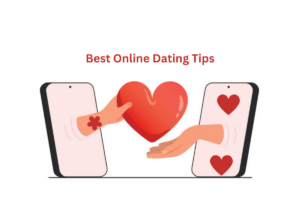Introduction: Love Knows No Distance
Long-distance relationships (LDRs) are like a modern love story—challenging, beautiful, and incredibly complex. They test the limits of patience, communication, and commitment, pushing both partners to grow individually and as a couple. In these relationships, emotional support isn’t just a buzzword; it’s the lifeline that sustains the bond, keeping your connection alive, thriving, and resilient even when physical proximity feels like a distant dream.

It becomes the foundation upon which trust, intimacy, and understanding are built, helping couples navigate the unique struggles and joys of loving from afar.
In today’s interconnected world, love doesn’t always mean sharing the same zip code. Couples are bridging gaps through technology, commitment, and raw emotional intelligence. But let’s be real—maintaining intimacy and connection across miles isn’t for the faint-hearted.

Understanding Emotional Support in Long-Distance Relationships
What Exactly is Emotional Support?
Emotional support in a long-distance relationship is more than just occasional text messages or sporadic video calls. It’s about:
- Creating a safe emotional space where both partners feel heard and understood
- Consistently showing up for each other, despite physical barriers
- Nurturing trust and intimacy through intentional communication
The Psychological Impact of Distance
Distance in a relationship can trigger a rollercoaster of emotions, often bringing anxiety, loneliness, and insecurity to the forefront. These feelings are natural as the physical separation creates a sense of vulnerability and uncertainty. However, here’s the silver lining: with intentional and strategic emotional support, these challenges can be transformed into opportunities for growth and deeper connection. By addressing these emotions openly and fostering understanding, couples in long-distance relationships can strengthen their bond, building a resilient foundation that thrives even in the face of physical separation.
Communication: The Heartbeat of Emotional Support
Beyond Words: Effective Communication Techniques
- Video Calls with Intention
- Schedule regular video dates
- Use these moments for meaningful conversations, not just surface-level chats
- Be fully present—put away distractions and give your partner your undivided attention
- The Power of Written Expression
- Send handwritten letters (yes, in the age of instant messaging!)
- Use messaging apps creatively
- Share voice notes that capture your emotional nuances

Technology: Your Emotional Connection Toolkit
Pro Tip: Leverage apps designed for couples. Some game-changing tools include:
- Lasting: A relationship health app offering guided communication sessions
- Love box: A cute messaging device that adds a tangible touch to digital communication
- Shared Calendar Apps: Keep track of each other’s lives and plan future connections
Coping with Emotional Challenges
Managing Loneliness and Anxiety
Loneliness is the uninvited third wheel in long-distance relationships. Here are strategies to keep it at bay:
- Self-Care is Relationship Care
- Develop individual hobbies and interests
- Maintain a strong support network of friends and family
- Practice mindfulness and meditation
- Emotional Check-Ins
- Create a ritual of regular emotional temperature checks
- Be vulnerable about your feelings
- Listen without judgment when your partner opens up
Building Trust and Intimacy from Afar
Strategies for Emotional Closeness
- Share Daily Experiences: Send photos, voice notes, or quick updates
- Plan Future Meetings: Having something to look forward to builds anticipation and hope
- Create Shared Experiences:
- Virtual movie nights
- Online game dates
- Simultaneous cooking sessions
Common Emotional Support Challenges
| Challenge | Solution |
| Miscommunication | Practice active listening, ask clarifying questions |
| Differing Communication Needs | Establish mutually agreeable communication rhythms |
| Feeling Disconnected | Regular, quality interactions over quantity |
When Professional Help Might Help
Sometimes, love needs a little extra support. Don’t hesitate to:
- Consider couples therapy (many now offer online sessions)
- Use mental health apps like Calm for individual stress management
- Attend virtual relationship workshops together
Pro Tips for Long-Distance Emotional Wellness
- Be Consistently Consistent
- Embrace Vulnerability
- Celebrate Small Moments
- Keep the Romance Alive
- Trust the Process
Conclusion: Love Transcends Distance
Long-distance relationships aren’t just about surviving the miles that separate you—they’re about thriving and growing together, no matter the physical distance. With intentional emotional support, honest and consistent communication, and unwavering commitment, you can nurture a bond that becomes stronger and more meaningful. It’s not just about enduring the separation; it’s about building a relationship that flourishes, not in spite of the distance, but because of the resilience, trust, and love it inspires.

Your Next Steps
Ready to transform your long-distance relationship? Start today:
- Schedule a meaningful conversation with your partner to discuss your feelings and goals.
- Download a couples’ app to stay connected and engaged in fun, interactive ways.
- Plan your next virtual date night, complete with shared activities or a movie.
- Write each other heartfelt letters or emails to express your emotions in deeper ways.
- Set a countdown for your next in-person meeting to create excitement and anticipation.
- Share daily updates or photos to feel involved in each other’s lives.
- Establish a consistent routine for calls or video chats to maintain connection.
- Read a book or watch a series together and discuss it to strengthen your bond.
- Explore shared hobbies that can be done remotely, like online games or creative projects.
- Celebrate milestones, big or small, to keep the relationship positive and thriving.
Remember: Distance is not a barrier; it’s a test to see how far love can truly travel. It challenges the strength, patience, and dedication of a relationship, proving that real love knows no boundaries. And trust us, love has an incredible ability to travel farther than you can imagine, bridging even the widest gaps with understanding, trust, and care.
Frequently Asked Questions
Q: How often should we communicate? A: Quality over quantity. Find a rhythm that works for both of you without causing pressure.
Q: Can long-distance relationships really work? A: Absolutely! With the right tools, communication, and emotional support, LDRs can be deeply fulfilling.
Q: How do I deal with jealousy in a long-distance relationship? A: Open communication, building trust, and working on personal insecurities are key.
Q: What are some ways to keep the spark alive in a long-distance relationship?
A: Plan creative virtual dates, send surprise gifts, share experiences like watching movies together, or write heartfelt letters.
Q: How do we handle arguments in a long-distance relationship?
A: Address conflicts calmly, listen to each other’s perspectives, and resolve issues over calls or video chats instead of text to avoid miscommunication.
Q: What can we do to feel closer despite the distance?
A: Share daily updates, create shared goals, and engage in activities like reading the same book or playing online games together.
Q: How do I manage the loneliness that comes with long-distance relationships?
A: Stay connected with your partner, maintain a strong support network of friends and family, and focus on personal growth and hobbies.
Q: When should we plan to close the distance?
A: Discuss your long-term goals as a couple and establish a timeline that aligns with both your personal and professional priorities.
Disclaimer: Every relationship is unique. What works for one couple might not work for another. The most important thing is finding your own rhythm.





